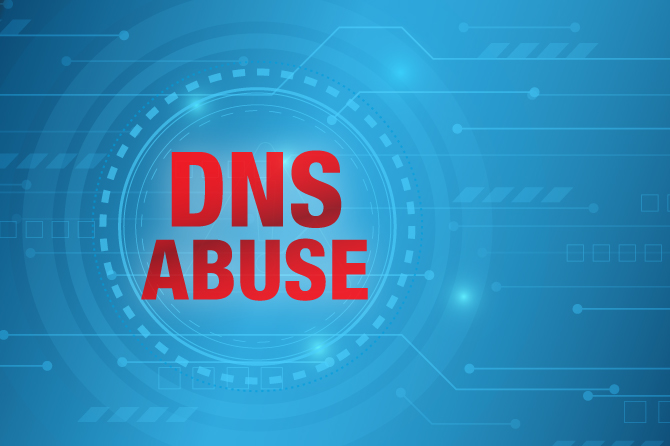Every few months, an important ceremony takes place. It’s not splashed all over the news, and it’s not attended by global dignitaries. It goes unnoticed by many, but its effects are felt across the globe. This ceremony helps make the internet more secure for billions of people.
This unique ceremony began in 2010 when Verisign, the Internet Corporation for Assigned Names and Numbers (ICANN), and the U.S. Department of Commerce’s National Telecommunications and Information Administration collaborated – with input from the global internet community – to deploy a technology called Domain Name System Security Extensions (DNSSEC) to the Domain Name System (DNS) root zone in a special ceremony. This wasn’t a one-off occurrence in the history of the DNS, though. Instead, these organizations developed a set of processes, procedures, and schedules that would be repeated for years to come. Today, these recurring ceremonies help ensure that the root zone is properly signed, and as a result, the DNS remains secure, stable, and resilient.
In this blog, we take the opportunity to explain these ceremonies in greater detail and describe the critical role that Verisign is honored to perform.
A Primer on DNSSEC, Key Signing Keys, and Zone Signing Keys
DNSSEC is a series of technical specifications that allow operators to build greater security into the DNS. Because the DNS was not initially designed as a secure system, DNSSEC represented an essential leap forward in securing DNS communications. Deploying DNSSEC allows operators to better protect their users, and it helps to prevent common threats such as “man-in-the-middle” attacks. DNSSEC works by using public key cryptography, which allows zone operators to cryptographically sign their zones. This allows anyone communicating with and validating a signed zone to know that their exchanges are genuine.
The root zone, like most signed zones, uses separate keys for zone signing and for key signing. The Key Signing Key (KSK) is separate from the Zone Signing Key (ZSK). However, unlike most zones, the root zone’s KSK and ZSK are operated by different organizations; ICANN serves as the KSK operator and Verisign as the ZSK operator. These separate roles for DNSSEC align naturally with ICANN as the Root Zone Manager and Verisign as the Root Zone Maintainer.
In practice, the KSK/ZSK split means that the KSK only signs the DNSSEC keys, and the ZSK signs all the other records in the zone. Signing with the KSK happens infrequently – only when the keys change. However, signing with the ZSK happens much more frequently – whenever any of the zone’s other data changes.
DNSSEC and Public Key Cryptography
Something to keep in mind before we go further: remember that DNSSEC utilizes public key cryptography, in which keys have both a private and public component. The private component is used to generate signatures and must be guarded closely. The public component is used to verify signatures and can be shared openly. Good cryptographic hygiene says that these keys should be changed (or “rolled”) periodically.
In DNSSEC, changing a KSK is generally difficult, whereas changing a ZSK is relatively easy. This is especially true for the root zone where a KSK rollover requires all validating recursive name servers to update their copy of the trust anchor. Whereas the first and only KSK rollover to date happened after a period of eight years, ZSK rollovers take place every three months. Not coincidentally, this is also how often root zone key signing ceremonies take place.
Why We Have Ceremonies
The notion of holding a “ceremony” for such an esoteric technical function may seem strange, but this ceremony is very different from what most people are used to. Our common understanding of the word “ceremony” brings to mind an event with speeches and formal attire. But in this case, the meaning refers simply to the formality and ritual aspects of the event.
There are two main reasons for holding key signing ceremonies. One is to bring participants together so that everyone may transparently witness the process. Ceremony participants include ICANN staff, Verisign staff, Trusted Community Representatives (TCRs), and external auditors, plus guests on occasion.
The other important reason, of course, is to generate DNSSEC signatures. Occasionally other activities take place as well, such as generating new keys, retiring equipment, and changing TCRs. In this post, we’ll focus only on the signature generation procedures.
The Key Signing Request
A month or two before each ceremony, Verisign generates a file called the Key Signing Request (KSR). This is an XML document which includes the set of public key records (both KSK and ZSK) to be signed and then used during the next calendar quarter. The KSR is securely transmitted from Verisign to the Internet Assigned Numbers Authority (IANA), which is a function of ICANN that performs root zone management. IANA securely stores the KSR until it is needed for the upcoming key signing ceremony.
Each quarter is divided into nine 10-day “slots” (for some quarters, the last slot is extended by a day or two) and the XML file contains nine key “bundles” to be signed. Each bundle, or slot, has a signature inception and expiration timestamp, such that they overlap by at least five days. The first and last slots in each quarter are used to perform ZSK rollovers. During these slots we publish two ZSKs and one KSK in the root zone.
At the Ceremony: Details Matter
The root zone KSK private component is held inside secure Hardware Security Modules (HSMs). These HSMs are stored inside locked safes, which in turn are kept inside locked rooms. At a key signing ceremony, the HSMs are taken out of their safes and activated for use. This all occurs according to a pre-defined script with many detailed steps, as shown in the figure below.

Also stored inside the safe is a laptop computer, its operating system on non-writable media (i.e., DVD), and a set of credentials for the TCRs, stored on smart cards and locked inside individual safe deposit boxes. Once all the necessary items are removed from the safes, the equipment can be turned on and activated.
The laptop computer is booted from its operating system DVD and the HSM is connected via Ethernet for data transfer and serial port for console logging. The TCR credentials are used to activate the HSM. Once activated, a USB thumb drive containing the KSR file is connected to the laptop and the signing program is started.
The signing program reads the KSR, validates it, and then displays information about the keys about to be signed. This includes the signature inception and expiration timestamps, and the ZSK key tag values.
Validate and Process KSR /media/KSR/KSK46/ksr-root-2022-q4-0.xml...
# Inception Expiration ZSK Tags KSK Tag(CKA_LABEL)
1 2022-10-01T00:00:00 2022-10-22T00:00:00 18733,20826
2 2022-10-11T00:00:00 2022-11-01T00:00:00 18733
3 2022-10-21T00:00:00 2022-11-11T00:00:00 18733
4 2022-10-31T00:00:00 2022-11-21T00:00:00 18733
5 2022-11-10T00:00:00 2022-12-01T00:00:00 18733
6 2022-11-20T00:00:00 2022-12-11T00:00:00 18733
7 2022-11-30T00:00:00 2022-12-21T00:00:00 18733
8 2022-12-10T00:00:00 2022-12-31T00:00:00 18733
9 2022-12-20T00:00:00 2023-01-10T00:00:00 00951,18733
...PASSED.
It also displays an SHA256 hash of the KSR file and a corresponding “PGP (Pretty Good Privacy) Word List.” The PGP Word List is a convenient and efficient way of verbally expressing hexadecimal values:
SHA256 hash of KSR:
ADCE9749F3DE4057AB680F2719B24A32B077DACA0F213AD2FB8223D5E8E7CDEC
>> ringbolt sardonic preshrunk dinosaur upset telephone crackdown Eskimo rhythm gravity artist celebrate bedlamp pioneer dogsled component ruffled inception surmount revenue artist Camelot cleanup sensation watchword Istanbul blowtorch specialist trauma truncated spindle unicorn <<
At this point, a Verisign representative comes forward to verify the KSR. The following actions then take place:
- The representative’s identity and proof-of-employment are verified.
- They verbalize the PGP Word List based on the KSR sent from Verisign.
- TCRs and other ceremony participants compare the spoken list of words to those displayed on the screen.
- When the checksum is confirmed to match, the ceremony administrator instructs the program to proceed with generating the signatures.
The signing program outputs a new XML document, called the Signed Key Response (SKR). This document contains signatures over the DNSKEY resource record sets in each of the nine slots. The SKR is saved to a USB thumb drive and given to a member of the Root Zone KSK Operations Security team. Usually sometime the next day, IANA securely transmits the SKR back to Verisign. Following several automatic and manual verification steps, the signature data is imported into Verisign’s root zone management system for use at the appropriate times in the next calendar quarter.
Why We Do It
Keeping the internet’s DNS secure, stable, and resilient is a crucial aspect of Verisign’s role as the Root Zone Maintainer. We are honored to participate in the key signing ceremonies with ICANN and the TCRs and do our part to help the DNS operate as it should.
For more information on root key signing ceremonies, visit the IANA website. Visitors can watch video recordings of previous ceremonies and even sign up to witness the next ceremony live. It’s a great resource, and a unique opportunity to take part in a process that helps keep the internet safe for all.




